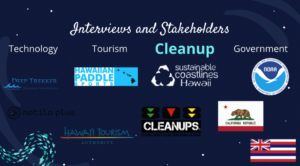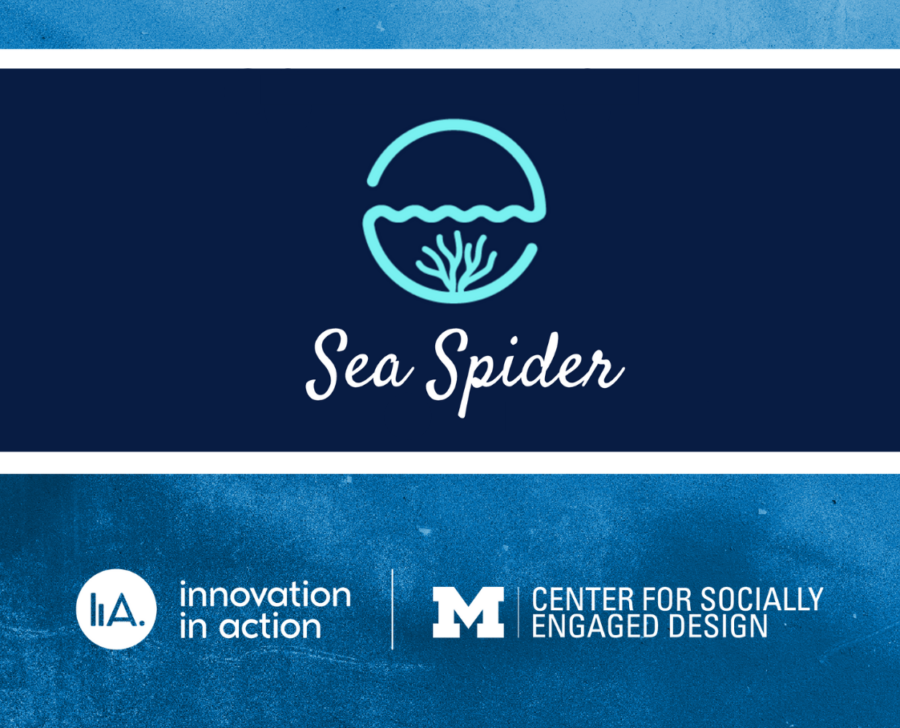Sea-Spider: The Future of Ocean Cleanup
Almost half of the Great Pacific Garbage Patch, a floating island of trash twice the size of Texas, is made up of discarded fishing gear. This gear, called ghost fishing nets, strangle marine life and block sun from contributing to the underwater ecosystem – an ecosystem responsible for at least half of the world’s oxygen and all sea-life. Even with the cleanup efforts of volunteer organizations and some governments, the ghost nets blend in with their surroundings making it difficult to locate with submarine or satellite imagery. This is where Innovation in Action team Sea-Spider plans to use artificial intelligence, in conjunction with existing technology, to predict when and where nets can be found.
Story by Lawryn Fraley
The Beginning of Sea-Spider
Sea-Spider’s founder, Joe Huang, grew up on the ocean’s edge and developed an early awareness of ocean pollution. He initially started investigating trash cleanup in waterways and quickly discovered the larger issue of discarded fishing gear. Soon Joe has assembled a team with passionate designers and diverse skill sets: Adam Zhang, Flora Luo, Joseph Vogelpohl, and Rim Bououdina. The team started by sketching out their first iteration of their solution: a robotic spider that crawled on the ocean floor looking for nets – inspiring the team name. But after several stakeholder interviews, the team realized that the ghost nets are much larger than they expected, thousands of pounds each, and require large boats and labor to successfully remove.
Next, the team pivoted to perhaps using an above-water drone to help locate the nets from above, but quickly discovered that drones are unable to see through the water well, especially during inclement weather. Finally, Sea-Spider settled on building additional software to retrofit autonomous, under-water drones already in use with artificial intelligence that can predict when and where nets can be found.

Without the insight and guidance from their stakeholders who are actively hunting down and removing the ghost nets, the team might not have gotten to their solution or have the same awareness, “our stakeholders also taught us to consider how our solution could further affect the environment unintentionally” admitted founder Joe Huang.
The Next Chapter

The Sea-Spider team joined Innovation in Action to learn more collaborative design skills like ecosystem mapping,
stakeholder interviewing protocol, and crafting an impactful story from a complex situation. Not only did the team grow as designers, but they learned how to work as a team outside of the classroom and without a course grade as a motivation. As a result, Sea-Spider was awarded Second Place in the 2022’s Innovation in Action Final Showcase and took home $7,500.
Looking forward, the team is pursuing additional funding to allow them to work onsite alongside the clean-up volunteers, conduct more stakeholder interviews, and test their prototype. Sea-Spider aims to provide the data they collect about the ocean while searching and pinpointing ghost nets to researchers and other developers. If this data could be sold at a low cost to for-profit organizations, Sea-Spider would be more sustainable as an organization and could aid in the discovery of the rest of the ocean. Finally, pollution of the ocean is a problem created by poor legislation therefore contributing to policy change is the team’s long-term goal.



